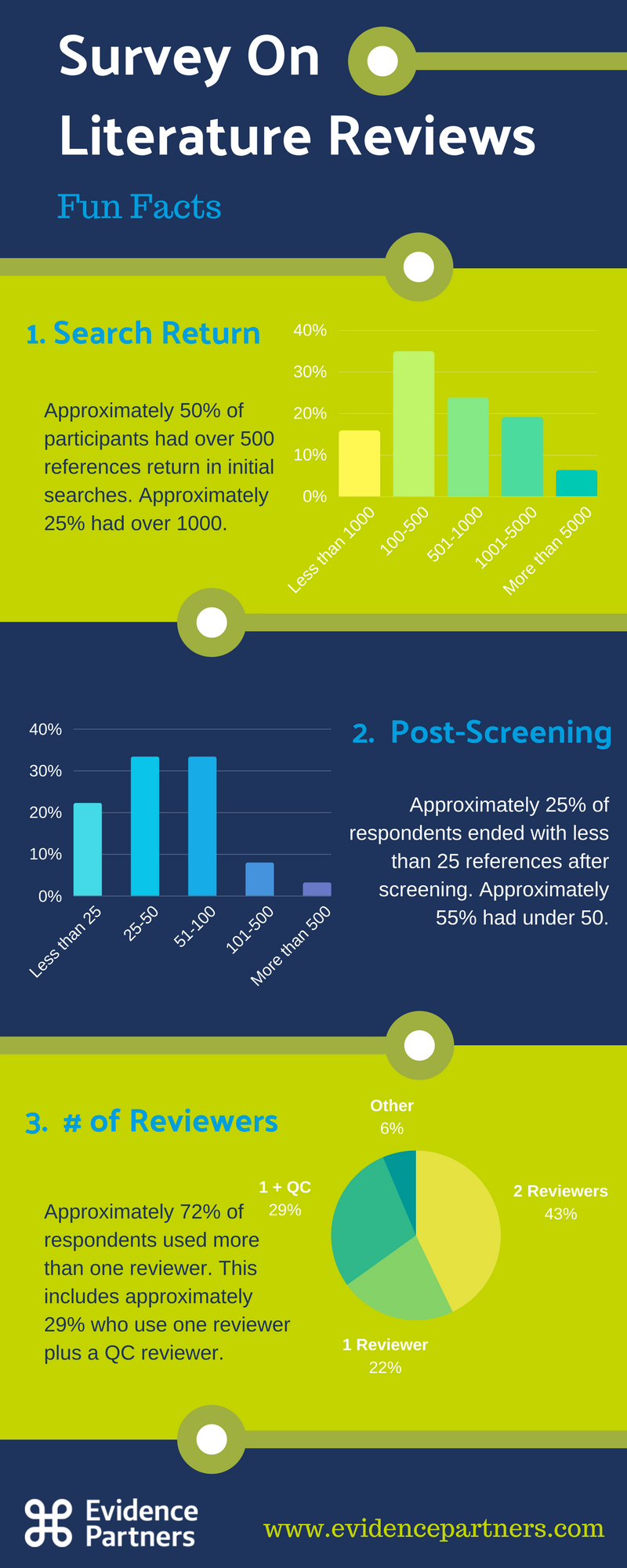“What’s your biggest literature review challenge?”
In August 2017, we asked a group of research professionals this – and a series of other burning questions – in our inaugural Survey on Literature Reviews. Their answers helped to shed light on how and why systematic reviews and other structured literature reviews are being conducted in a number of fields and delivered valuable insights that will help shape the future of literature review software and best practices.
Although the 2017 Survey on Literature Reviews provided important information about the state of literature reviews as a tool for a wide range of research purposes, we also discovered these three fun facts:

1. Search Return: That’s a lot…
We asked survey participants how many references or abstracts were returned from their initial literature searches. Over 50% of respondents had over 500 references, with more than 25% of respondents having over 1,000 references.
That’s a lot of references to screen for potential inclusion in your review!
So, if you’re one of those researchers with a lot of screening to do, don’t fret – there are plenty of others in the same situation.
Have a lot of references to screen? Here’s one simple way you can speed up your screening process.
2. Post Screening: Whittle it down… way down…
We also asked how many references survived the screening process and wound up included in the review. Approximately 25% of respondents ended up with less than 25 references after screening, and over 55% of respondents had less than 50 references after screening.
Considering most researchers start with more than 500 references upon initial searches, the screening process is certainly essential in whittling down the count. That’s still a lot of papers to wade through to get to the relevant stuff though…
Just because you’ve excluded it doesn’t mean it’s not important. Learn some tags to help keep track of excluded references.
3. # of Reviewers: 1 + 1 = QC
How many reviewers do you use in data extraction? We found that approximately 72% of respondents used more than one reviewer. This included approximately 29% of respondents having one person reviewing, and another checking the first reviewer’s decisions, or performing quality control (QC).
Which approach is most effective? Check out our blog post highlighting the pros and cons of the different approaches to data extraction.








